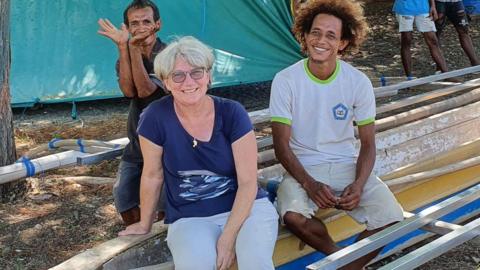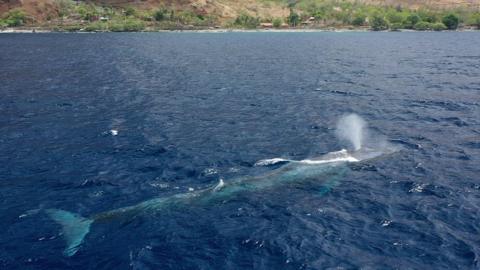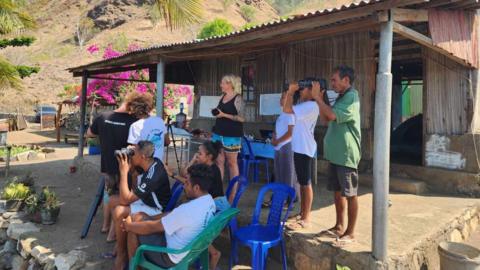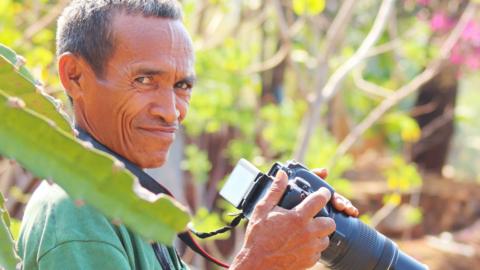For about two months each year, fisherman Faustino Mauloko da Cunha transforms his home along the South Pacific coast into a whale monitoring station.
From the morning, villagers and student volunteers gather at the house in Subaun, a village in the north of Timor-Leste. Armed with binoculars and telephoto cameras, they watch the cobalt waters for one of its great treasures - pygmy blue whales.
When there is a sighting, it’s all systems go.
Faustino's son, Zacarias, dispatches a drone. Then the team’s leader, Australian marine ecologist Karen Edyvane, guides him to take the best photographs. When the drone returns, the team reviews the pictures, taking notes on a white board.
It's a small and thrifty operation in Timor-Leste, which is part of an archipelago that lies between South East Asia and the South Pacific. But it has generated a wealth of information about pygmy blue whales - one of the largest animals on earth, whose vast habitats and elusive nature make them challenging to study.
These citizen science researchers, all of them locals, have spotted nearly 3,000 pygmy blue whales over the past 10 years - Prof Edyvane considers that a “truly extraordinary” number.



